All Our Destinations
Help me choose
Choose what's important to you, and the map will show you the best islands.
- Sandy Beaches
- Boating
- Small & Easy
- Nightlife
- Easy access
- Activities & Shopping
- Excursions & cultural
- Picturesque & traditional
- Small children
- Lively & cosmopolitan
- Off the Beaten Track
Cyclades
IONIAN
Mainland
North East Aegean
Our team of travel experts are ready to help locate the perfect villa or yacht for your needs.
"We had the most magical holiday in Spetses - it was truly one of the best holidays we have ever had! The villa is absolutely beautiful. It is in such a fantastic position and is furnished so elegantly but still feels like a home. The gardens are gorgeous. Everywhere you look, both inside and outside the house, there is something beautiful to feast your eyes on. Peter and Reagan were very kind and looked after us really well and Willem the chef was outstanding. Maki was incredibly helpful and looked after all our restaurant bookings etc. Maria was excellent at sorting out all of our transfer arrangements. All in all, we felt very spoilt. "
A.S. Spetses, 2021
Quick Travel Guide
See our full travel guideVisiting the Greek Islands
Greece is not always a country of seamless five star luxury or smooth and silently padding staff bowing in respectful and white gloved service – as one finds… Read More
Off Season
The quality of life improves – Food is better, people have more time for you, beaches are quiet… Read More
Off the Beaten Track
Less people, unspoilt landscape, uncrowded beaches, traditional values and village… Read More
Weather
There are two basic weather patterns in the islands in summer: 1. Calm and hot… Read More
Peace & Quiet
August is high season and very busy on most islands – beaches are crowded, the bays are… Read More
On the Beaten Track
Easy access via airports and good, fast hydrofoils, boats and ferries. Better infrastructure… Read More
Island Groups
Our portraits of the different island groups and mainland destinations are designed to highlight the pros and cons of each area.
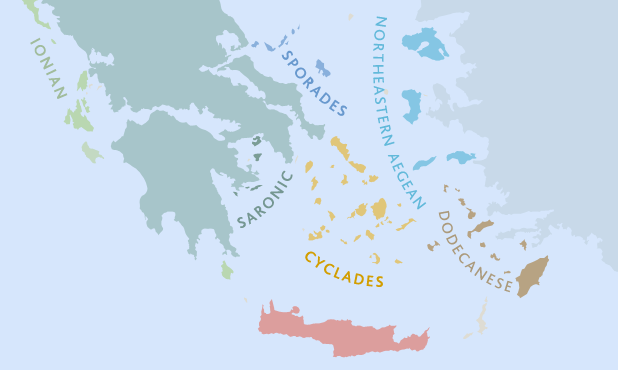
How to choose the right Greek island.
Whether you are planning a cruise or a villa holiday, it is well worth researching the island groups – choosing the right destination for your vacation is one of the most important decisions you will make. We are here to help.
For details on individual islands see our destinations
Our team of travel experts are ready to help locate the perfect villa or yacht for your needs.
Argo-Saronic
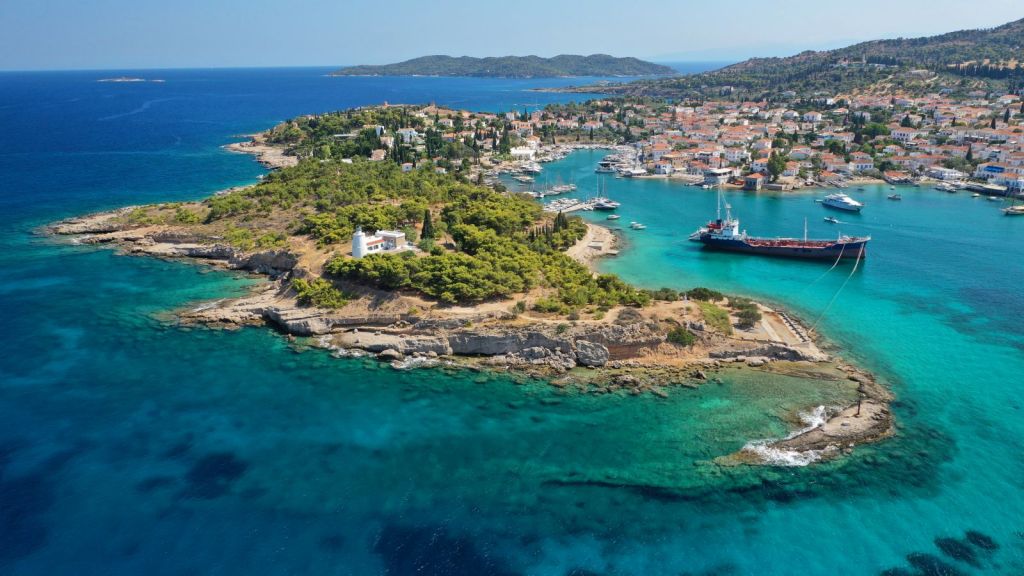
Tiled roofs and pastel-coloured or white houses with wooden shutters, wrought-iron balustrades, pebble mosaic courtyards lush with bougainvillea and jasmine, Aegina, Hydra and Spetses are the closest lying islands to Athens – hot and windless in summer, temperate in winter. They are all historically wealthy and interesting. On Hydra Spetses lovely mansions built by 18th and 19th century merchants and sea captains cluster together on steep hillsides and water fronts, and are now weekend or summer homes to elegant Athenians and artistic foreigners. Easy access from Athens (3 hours by car and then water taxi, or 2-3 hours by frequent hydrofoil from Piraeus).
Water taxis take visitors for glorious bathing in coves and bays, but not so great for beaches. All these places are well situated for sightseeing on the mainland, such as Epidauros, Mycenae, Corinth, Nafplion, and for ease of access to Athens.
Aegina
Is the closest island to Athens – weekends and even commuting are all possible from here. Aegina has a historical town with a pretty waterfront of pastel- coloured red roofed houses, , a fine tradition of architecture, crafts, ceramics and good food, the classical temple of Aphaia, one of Greece’s largest working monasteries, and is famous for its pistachio production.
Hydra
Is a picture postcard, car-free island with an artist colony, (Leonard Cohen lived here) and a fine, historical town. Dominated by a great, barren mountain, the village with its red roofs spills down amphitheatrically to the waterfront where life happens. There is limited beach life, but residents find that the easy boating, charm, beauty and style of the island more than makes up for this.
Spetses
Is known as the Hamptons of Athens – glamorous visitors who go regularly and have low-key summer homes and villa-hop amongst themselves and their friends across the water in Port Heli. It is easier to get to, greener and gentler than Hydra, has a wonderful historical car-free town with beautiful mansions, fine village houses, a museum, good shopping and dining. Take advantage of the calm waters and pretty swimming coves by going on boat trips, thus avoiding the beaches which aren’t great.
Porto Heli & Kilada
Is a six-minute water taxi ride away on the coast opposite. Not a beautiful town, but a very upmarket area with some of the highest property values in Greece, where wealthy families have waterfront summer homes and various royals and their friends vacation, so bring your jewelry and charter a yacht to go with the house. Shipping magnates congregate here with their yachts and hop between friends’ villas in Spetses and Porto Heli. Ideally placed for sightseeing on the mainland and well served for water sports.
Dodecanese

Closer to Turkey than Greece, these islands have a long and rich history, with traces from classical Greek times through Byzantium, the Crusaders, Venetians and Ottomans. These islands lie outside the main path of the “meltemi” wind, but still enjoy some stiff breezes. They are not on the Greek Yacht itinerary as they are too far from Athens, but, apart from Patmos, are well served by air.
Kos
Close to the Turkish mainland, with an international airport and a large and busy town, is a repository of treasures from all stages of its long history as well as offering huge and well-organized sandy beaches.
Kalymnos
Is a small, fascinating and beautiful island with a character all of its own – possibly the number one climbing centre of Europe, it also has a quirkiness and a unique history that will keep visitors busy for days if they choose to do a deep dive into it – which given Kalymnos’ role in the deep-sea diving sponge industry since Ancient Greek times, is the right thing to do. Tradition and pride inform the whole island.
Patmos
Is the elegant and atmospheric island of St John the Evangelist and the monastery where he wrote the Book of Revelations stamps the whole island with a gravitas which few other islands share – notably in the preservation of traditional houses, interiors and village architecture. The mountaintop Chora is the chic place to be, with literally divine views and medieval cobbled lanes, and guests often charter a wooden yacht to beach and taverna hop in gracious tranquility. Those wanting a pool and easy beach access can now find houses down on the water too.
North East Aegean
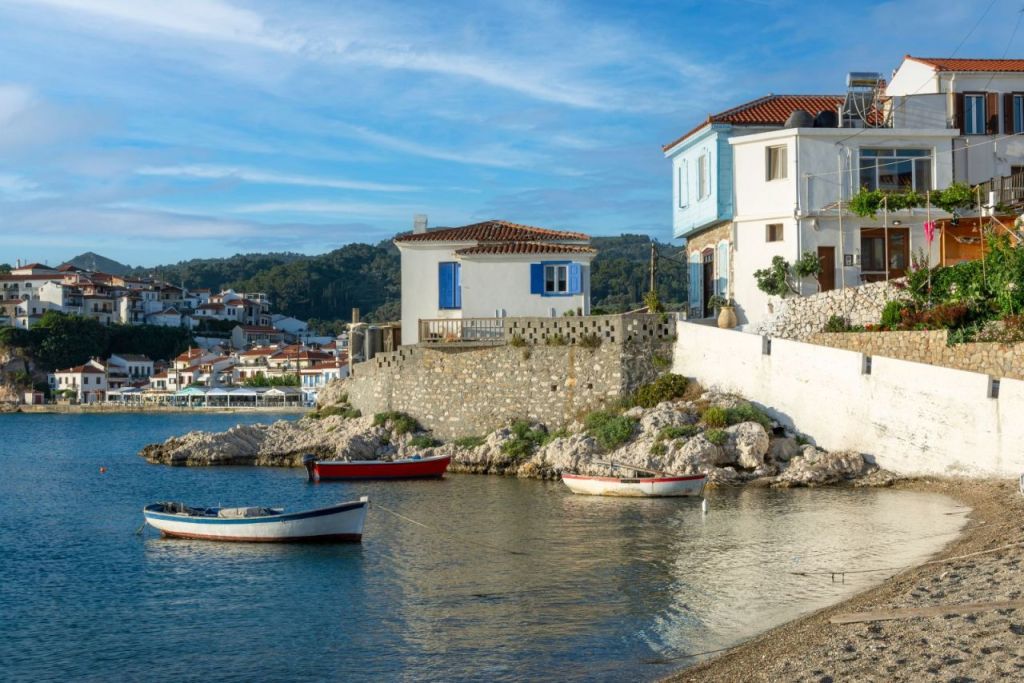
Lying in the northern Aegean, these islands have a slightly shorter summer season and damper winter than further south. Not as windy as the Cyclades, but not as becalmed as the Ionian, the climate is generally more temperate and the land fertile. They are perhaps the least touristy islands in Greece; like the Dodecanese, these are easier to reach by air – even internationally, than as part of an island hopping itinerary. They share a similar history to that of the Dodecanese due to their proximity to the Turkish coast but lack the “star power” of Rhodes and Patmos and remain undiscovered by any celebrity – which can be a good or bad thing depending on your point of view. They are not really on the Turkish Gulet itinerary either, though day trips from Turkey are a feature, so they fall between two stools. In exchange, visitors will find self-sufficient authenticity and barely-visited sites of archeological interest. Great for explorers.
Ikaria has gained a certain fame for being the home of some of the longest-living people in Europe, while Samos, Lesvos (or Lesbos) and Chios are all very distinct from eachother with strong characteristics and a unique history which continues even today.
Samos
Is a large and varied island with some wonderful mountain villages and lots to see. It has an airport, and Ephesus is just a day trip away. Beaches, hikes, history, churches, caves, and echoes of Pythagoras set in verdant mountains and bounded by a lovely coastline.
Lesbos
Aka Lesvos and even Mytilene, is a treasure trove of profound historical and geographical interest – from a mini Delphi-like temple of Apollo to Ottoman era natural hot spring baths, medieval fortresses and waterfalls, fishing ports, byzantine churches flamiAngo-lagoons, ouzo factories and of course the famous “petrified Forest,” Lesbos is for real travellers.AA
Crete
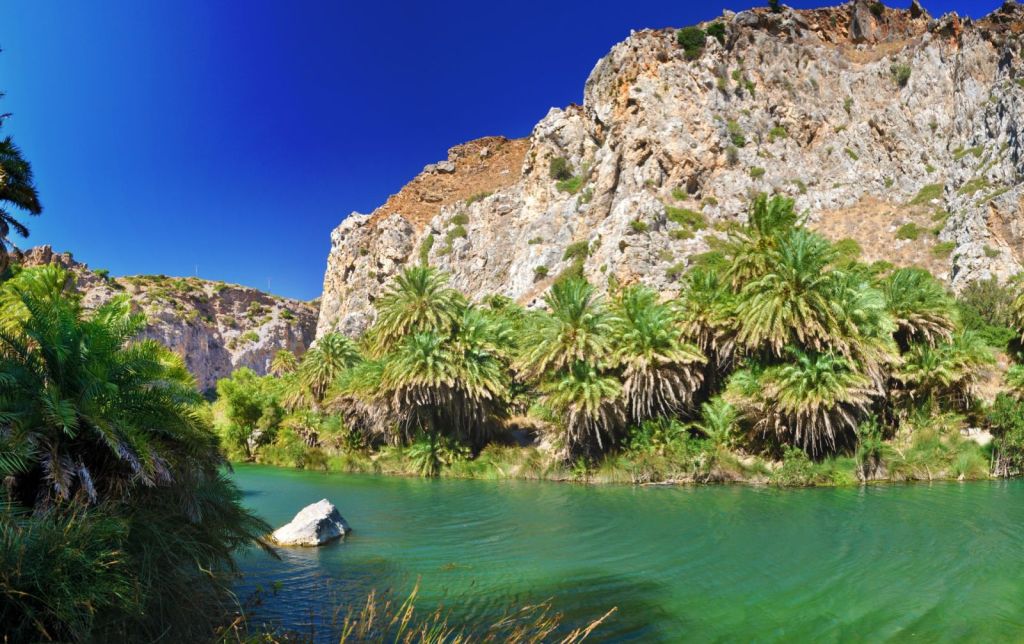
Crete is almost a country in itself, with a wealth of historical towns, archaeological sites, traditional villages, gastronomic experiences, gorges, mountains and beaches. Be prepared to drive long distances to see it all, from Heraklion and Knossos in the north, Elounda Bay and Spinalonga island on the east, the wild beaches, unique European banana plantations and pretty ports of the south, Chania and the Gorges of Samaria on the west, and countless treasures in the middle. Consider a two-centre vacation as well if you really want to see it all. The southernmost part of Europe by some measures, summer lingers longest here, with swimming and warm sun usual right into early December.
Cyclades
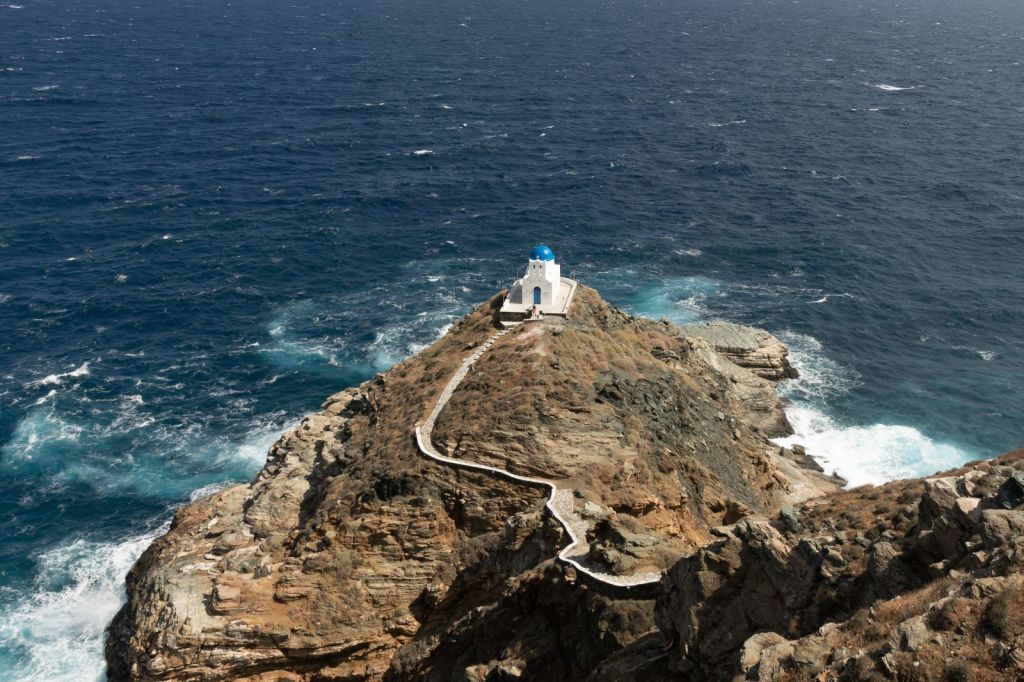
These are the classic Greek islands of countless posters, films and postcards: White-washed villages, sugar-cube houses, blue domed churches, these islands are often the repositories of most of Greece’s best preserved island traditions and deserve their iconic status. Treeless, mountainous, barren, usually very windy in high summer, they enjoy reliable sunny weather early and late in the season. The “meltemi”, which is the prevailing north wind in high summer, can get very strong indeed. It is known as the island doctor for its bracing and cleansing effect, and it comes in three strengths: the Kapelata – blows your hat off, the Kareklata – blows chairs over, and the Trapezata – blows tables over. Not for those who don’t like rough seas, but great for keeping temperatures down and flies and mosquitoes away! There is often a main port, and then a mountain-top capital called the Chora, where picturesque old houses line cobbled, flower-filled lanes. Beaches are usually sandy, the light dazzling, the colours vibrant, and the food is good.
Mykonos and Santorini are the King and Queen of these islands. Photogenic, hip and picturesque. Late and early season are great here as the weather is calmer and there is enough life until late in the season for things to be open.
Amorgos
Is the fatally beautiful and unspoiled home to the wonderful Hozoviotissa Church, (ladies, no trousers!) extraordinary rugged and cliff-girt landscapes, and authentic villages.
Antiparos
Is quiet and secluded, with a cute town, some very nice beaches but not an awful lot goes on there – in public anyway – An island of private villas and no good hotels. Ideal for quiet, laid-back island life and villa-hopping between friends. The Mustique of Greece in some ways.
Andros
Is mountainous, windy, untouristy, and has lovely landscape and beaches. The village of Chora is home to many of the great shipping dynasties of Greece.
Folegandros
Is best known for the iconic Church of the Virgin Mary reached up a zig zag path of whitewashed steps. Glorious water, coves and beaches plus a lovely whitewashed village perched high up make this a growing favorite.
Ios
Is crowned with a picturesque hilltop village of whitewashed cubic houses and colorful flowers set in a ruggedly beautiful landscape. Down on the coast are fabulous sandy beaches, a hip port with some sophisticated places to eat and drink –. Party-going youngsters can still find clubs and places to go through.
Kea
Is an unspoiled island with a more fertile landscape than the other Cyclades, and a lively yachting scene.
Koufonisia
A miniature island with a perfect blue lagoon and very good food.
Kynthos
Is the place to go to do as little as possible and really relax in a dozy, traditional Cycladic setting – there are some very good tavernas and some beautiful beaches
Milos
Is one of the shining stars of the islands – famous for its gaily-painted boat sheds (syrmata)
that line picturesque fishing havens, spectacular beaches with extraordinary colours, the bone-white moonscape of the northern coast, beautiful villages – hilltop or harbour, remote southern coast and some truly great restaurants, Milos is totally unique.
Mykonos
Prices are steep, and beachfront properties there are at a premium. Mykonos is wild and parties like mad, fantastic beaches, crowds especially in August and July, great shops, bars, clubs and restaurants. Can be hard to get a deckchair or umbrella on the beach in the afternoon, or a table at a good restaurant. A VIP concierge is almost a must, to take care of the logistics and get guests into the places where they want to go, when they want to go, and get them back again!
Naxos
Prides itself on its thriving rural and agricultural life, supported by its fertile and mountainous landscape. The lively beach and night life happens down south close to the airport.
Paros
Is now one of Greece’s most in-demand islands – it offers so much, but remains laid-back and authentic. World class wind and kite-surfing, fun villages, a huge number of all kinds of beaches – wide and sandy or pebbly and narrow and lively yet moderate night life. There is much to do here, and it is one of the islands where we recommend having a dedicated concierge
Santorini
Unique. Its extraordinary red crater and cliffs set in dark, deep water are the setting for dazzling white houses. Well organized to offer visitors plenty to see and do – museums, cruising, water sports, volcano tours. Small children are not usually welcomed in hotels, and there are steps everywhere. The beaches shelve deeply and do get crowded in August. Clubs, hotels and dining to suit the most sophisticated of visitors.
Serifos
Is very picturesque and unspoiled with a gorgeous hilltop village – its Chora is one of the finest in the Cyclades, it burns with a wild and tawny landscape cooled off at the fringes by tamarisk-shaded natural beaches with authentic tavernas. Not for clubbers or shoppers though!
Sifnos
Is a class act with excellent food, awareness of its heritage, pretty, tidy villages, unspoilt landscape and some good beaches. They say a church for every day of the year, and a photographer’s paradise.
Syros
Has a famously beautiful neo-classical port with gracious buildings and interesting bars and clubs, it is still the home of some of Greece’s most authentic folk- music, has some really cool music bars, great food and some good beaches.
Tinos
Is quiet, devout, traditional, with Greece’s most beautiful villages and the famous intricately carved dovecotes.
Sporades

The Sporades islands or Skiathos, Skopelos, Alonnisos and Skyros are cherished for being wind-sheltered – a rarity in the Aegean, verdantly well-watered, also a rarity, while having some of the most beautiful beaches in Greece. They are not the iconic Cycladic style of white-washed cubic houses, nor are they famed for their food and shopping, but these islands offer Byzantine churches, tiled roofed village houses, wonderful waters and some of the best swimming and boating in the Mediterranean. Their green and gentle charm, and simple rustic atmosphere enticed the producers of Mamma Mia to set their film here.
Skopelos
Is a large island, beautiful and unspoiled with lush forests, beautiful waters, peaceful harbours, great beaches and pretty villages – great for cruising around as the sea is usually calm and the coastlines are tremendous. The villages are neat and traditional and the charm of the island lies in its natural beauty and tranquility.
Skyros
Is a hybrid; half the island looks Cycladic, the other half Sporades. Famed for being the place where the First World War poet Rupert Brooke died, and also famous for its ceramics, handicrafts, beaches, churches, and a race of wild horses….
Skiathos
Which has an airport, is a well-established tourist island with some of the finest beaches in Greece and famous pine forests as well. Rather crowded in summer, with a built-up southern coastline, well-organised beaches with water sports, snack bars, tavernas and music, this side of the island is great fun for teenagers and people wanting a bit more zip and life than on the sleepier islands. It has a mountainous and unspoiled interior, and some beautiful , unspoiled beaches in the north, accessible only by boat.
Alonissos
Mainland
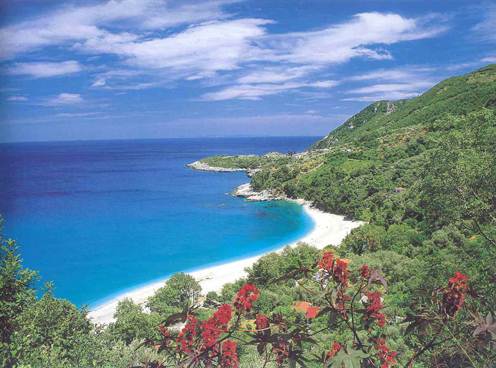
Greece in the travel world, usually means “the Greek islands”, This is a real shame. As magical as the islands are, the mainland – both the northern part and the Peloponnese are fascinating, stuffed full of historical treasures, magnificent landscapes, authentic villages and tavernas, and stunning coasts to explore. Easy to access by car as well as air, and far from the madding crowds of the islands, we dare you to try something different….
Pelion
Is a mountainous and unspoiled peninsula on the North-west coast. Its chestnut forests and gushing mountain streams were home to the Centaurs, and Achilles was brought up on its wonderful peasant food, clear air, and hard, snowy winters. Beautiful walks, picturesque villages with characteristic mountain architecture, orchards and trees, and wonderful views down the steep mountain flanks to pristine sandy beaches. Cooler nights and a shorter summer season than the islands.
Halkidiki
The three-fingered peninsula of Halkidiki is richly endowed with sandy beaches, calm seas, water sports and leisure activities, and hotels,– International flights to Thessaloniki make it an easy place for families. Thessaloniki and Olynthos are great days out, and Mount Athos can be visited by all by boat. Diaporos island is just off the coast, opposite Halkidiki a small semi-private island with a small number of villas that offer a low-key yet luxurious beachfront lifestyle.
Mitzela
Down on the southern shore of the Pagasitiko Gulf that faces Pelion, is a pleasant harbor village with good boating, pebbly beaches, calm seas, and pretty village scenes that are local and authentic. It is quite well placed for excursions to Thermopylae and even Delphi.
Mani
Is Greece’s Deep South – wild, fierce and with a unique history from ancient Greece through the Franks and Byzantines to the Greek war of Independence, and astounding local features- villages of stone “skyscraper” medieval towers, walled towns, monasteries, high mountains, a literary festival, famous olive groves, caves and beaches, ruins and temples, and very authentic fishing ports and harbors. This is a brilliant place for explorers. International flights to Kalamata and a new highway from Athens make it all fantastically accessible now. Boating is great here, and the summer season lasts well into November.
Ionian
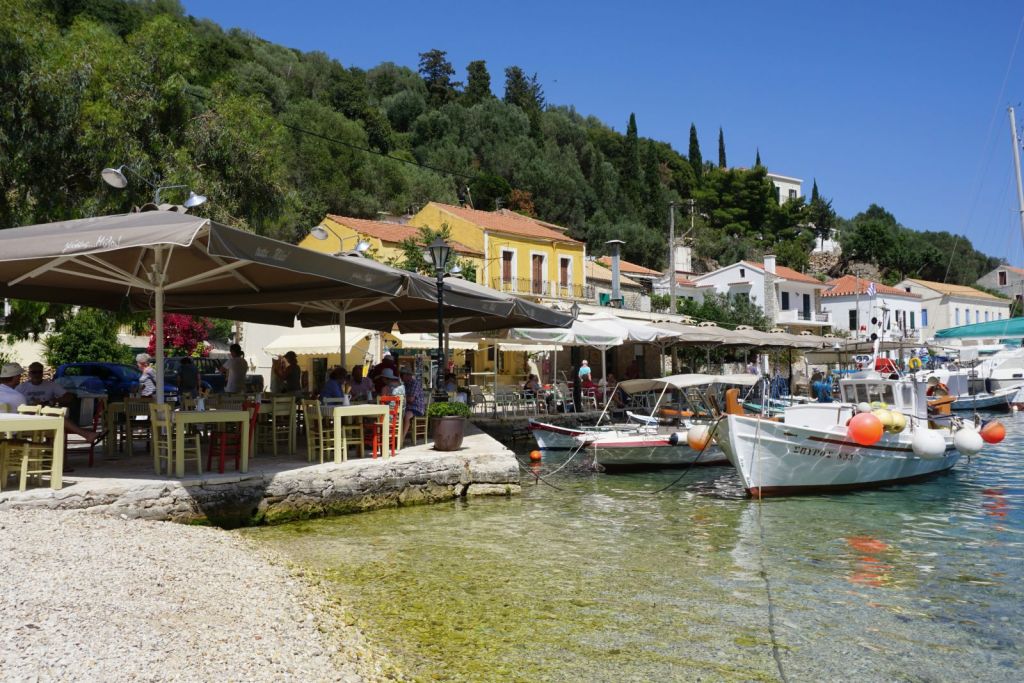
Gentle, fertile, mountainous and beautiful islands on the west coast of Greece facing Sicily, in the Ionian Sea, the “other” side of Greece.
These islands have a shorter summer season and wetter winter and spring than the Aegean, though the sea is generally warmer and stays warm for longer.
These are also the islands to go to if you don’t like the wind. The calm water and sensational swimming attract the yachters. Some sandy beaches, mostly clear, pebbly coves and limestone cliffs and grottoes. Italianate villages with tiled roofs and pastel-coloured houses framed with cypresses, olive groves and pine trees. These islands were part of the Venetian empire for 400 years and have an Italianate charm that is unlike the rest of Greece. The dialect is full of Italian words set in a melodic sing-song accent that is unique in Greece.
Greek purists do not consider these to be true Greece; they miss the wind, they can’t cope with the wasps and mosquitoes, the more western style cuisine, and the islands have a defiantly “Ionian “ character – on still sees flags flying from some boats of the short-lived “Seven Island Republic” with the venetian Lion of St Mark holding a pawful of arrows. These are not the sugar-cube houses and windmills beloved of Instagrammers, and the food is not as good as over in the “real” Greece, but the claim to having the loveliest swimming in Greece is one that all Greeks respect, and they now happily join the foreign visitors who long ago discovered the joys of fabulous boating and swimming in calm, crystal clear, translucent water.
Corfu
Is a large and rich island with a huge amount of history – from Homeric sites to a British colonial era cricket pitch, the fabulous old Corfu Town (a UNESCO World Heritage site), with its Venetian architecture , churches and fine museums, a Hapsburg palace, Byzantine churches to the Gerald Durrell trail. The island has equally rich and lively traditions – Carnival, Easter and the brass bands of the island are all famous. The wonderful coastline of the west and north of the island is still beautiful, though parts of the eastern coastline have been developed intensely. This is the most sophisticated of the Ionian islands, with some great restaurants and boutiques. Distances can be long in the summer traffic, and chartering a skippered boat is the best way to enjoy a villa stay here and explore the island.
Ithaca
Is harder to get to and is definitely “off” the track although thanks to its beautiful coast and clear waters it is fast becoming a destination for discreet VIPS on mega-yachts un summer and lower-key yachts in autumn. Expect goat bells, mountain herbs, and some very picturesque little villages. Ithaca is sublimely beautiful and the summer home to super-wealthy connoisseurs, but there is little between these homes and the pretty rental apartments in the villages, so not for those wanting fine dining outside the house, nightlife and shopping!
Kefalonia
Is one of Greece’s largest islands with some famously beautiful beaches, plenty to see and do, natural caves, a subterranean lake, turtles swimming in the port, mountains forested with a rare species of pine, monasteries and churches of miraculous legends, a medieval castle, folkore museum, excellent wineries, and the port of Fiscardo, considered one of Greece’s most picturesque villages. Not for foodies though – apologies Kefalonia, but you can do better!
Paxos
Is small and chic, with beautifully preserved pastel fishing villages, and the beloved summer home to low-key and peaceful families who come year after year and feel part of the local scene. Wonderful west-coast cliffs, grottoes and beaches, and Antipaxos like a peacock blue teardrop hanging below it. Frequent access from Corfu.
Lefkada
Boasts lovely mountain landscapes with crumbling villages tucked away, but is mostly famous for its amazing kilometer-long sandy beaches on the west coast with turquoise water, the pretty coves and bays of the east coast and the island archipelago (including Skorpios). The architecture here is not very distinguished, but it does enjoy easy road access from the mainland and Prevesa airport. As a major sailing and yachting hub, its season is long.
Meganissi
Is a small green island which was discovered by the yachting community in the last fifteen years or so, thanks to its calm and sheltered waters and extraordinarily indented coastline. Onassis’ island of Skorpios and the Valaouritis eighteenth-century palazzo on the isle of Madouri lie opposite and lend it a glow of glamour. A quick ferry-hop over from Lefkada which is just an hour or so from Prevesa international airport, make it an increasingly popular destination for families wanting life on the water.
Zakynthos
Is home to Greece’s most famous beach “Shipwreck Bay” and blue grottoes in the beautiful and unspoiled north of the island. The south has been definitively spoiled by airpor -fuelled, down-market tourism drawn there by the beautiful sandy beaches, the still visible parts of the old Venetian-era town of Zakynthos, and of course the “caretta caretta” turtle breeding grounds.
Ionian Coast
Opposite Lefkada is the relatively new destination of Paleros – a quiet mainland coastal area that enjoys the same Ionian climate and almost the same quality water as the islands, with a mainland twist – more rural, more agricultural, backward in some ways, with interesting lagoon wildlife, water sports and a mountainous hinterland of caves, climbing and pastoral life. Explorers’ bragging rights and lots of authenticity.
Evia
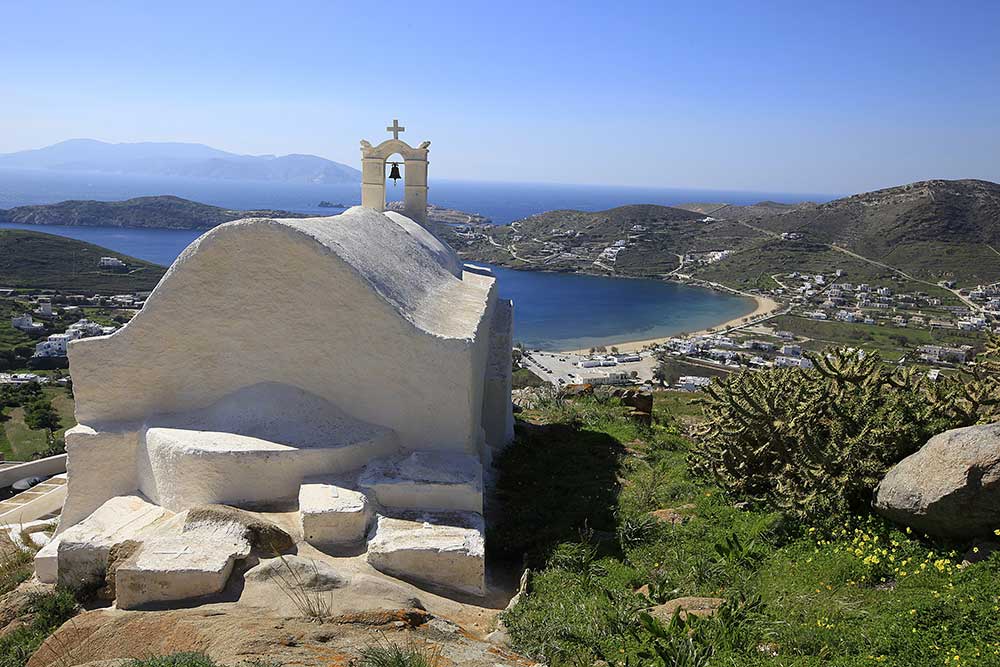
Evia is a large, fertile, mountainous and beautiful island close to Athens and connected by a bridge as well as ferries, so great for those needing to be in touch with a city. It has a wild and windy east coast with cliffs and roller-pounded sandy beaches that are uncrowded even in August. The west coast is the calm and pebbly inland sea between Evia and Athens and is very popular with local tourist families. The villages are mostly post-war 1950’s onwards, and get crowded, but prices are low and the food is excellent. A scattering of small islands lie in the gulf and offer discreet water-front living.
Spotlight On...
The Perfect Miniature Island
View this Destination
Antiparos
Corfu is back in fashion -- though for the true Corfiot lovers and cognoscenti it never went out of style!
View this Destination
Corfu
View this Destination
Syros
View this Destination
Kalymnos
The incredible Greek islands – the sea, the light, the atmosphere, the beauty are incomparable, and the warm, genuine friendliness of the Greeks is legendary, But how to choose where to go with such a bewildering array of islands and mainland destinations on offer? Our short guides are well known for their down-to-earth honesty, and are really helpful in pin-pointing the main differences between different places. The right house on the wrong island is just as bad as the wrong house on the right island..
Explore these pages and contact us for our uniquely successful matchmaking service!









